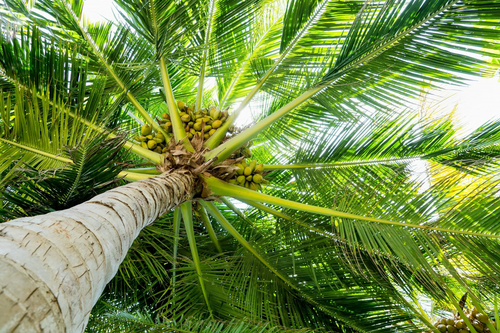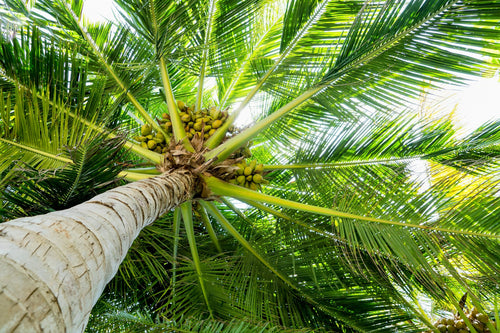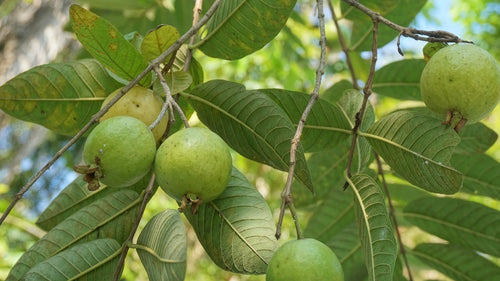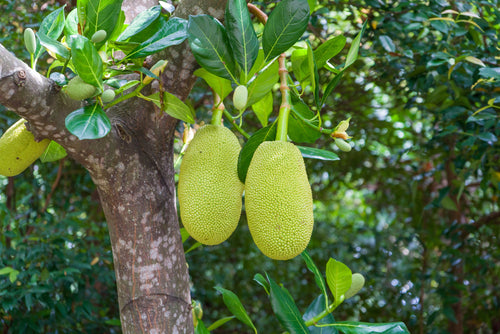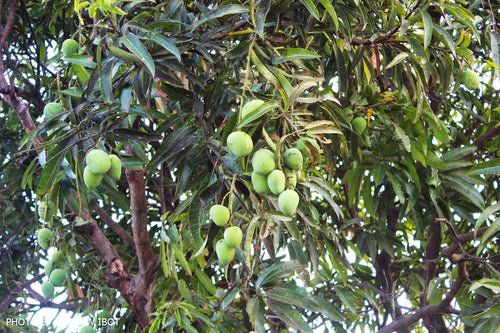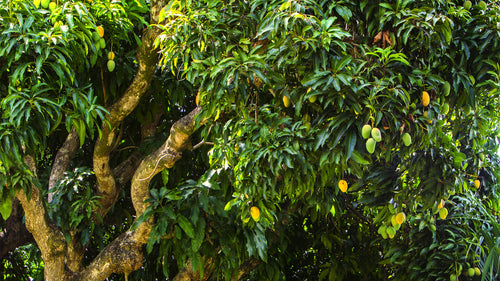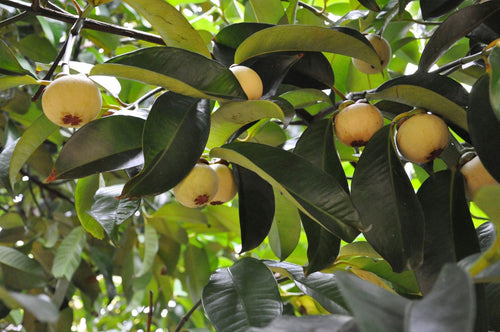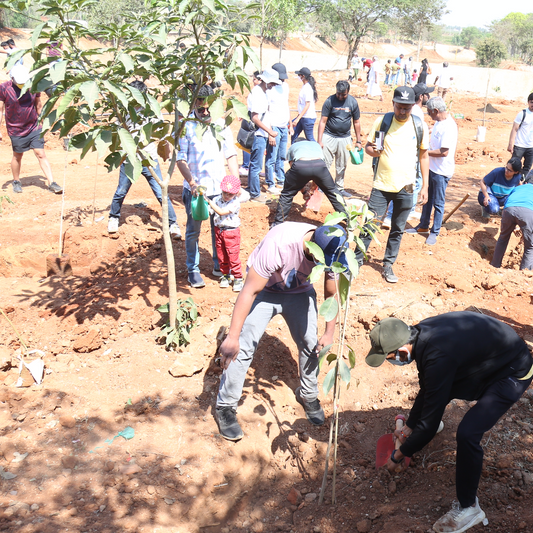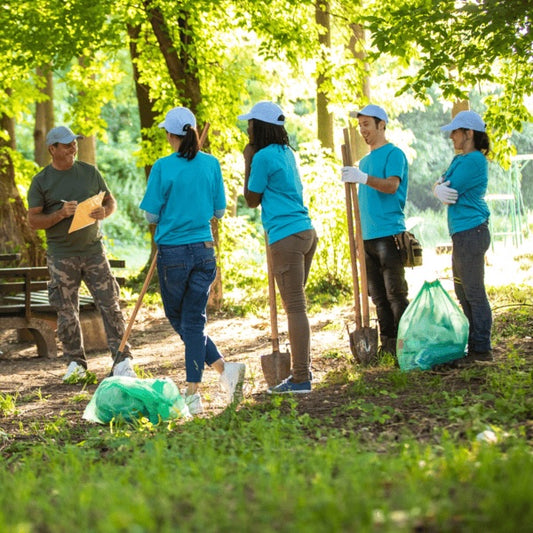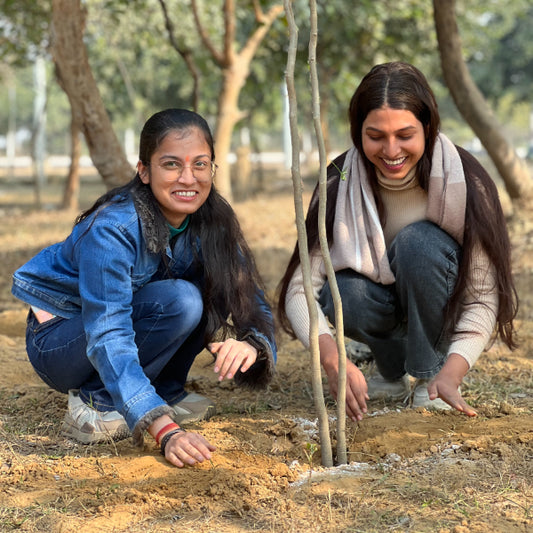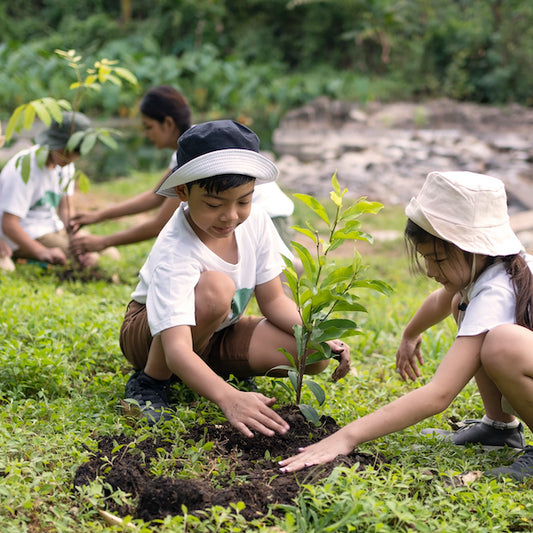IIMT Group of Colleges Combines Knowledge and Nature with Agroforestry at ICs - SEMICONDUCTOR INDIA 2024
The IIMT Group of Colleges, known for its academic excellence and strong commitment to environmental sustainability, took an impactful step towards fo Read more
Plantation Site Gallery
Project Update 1

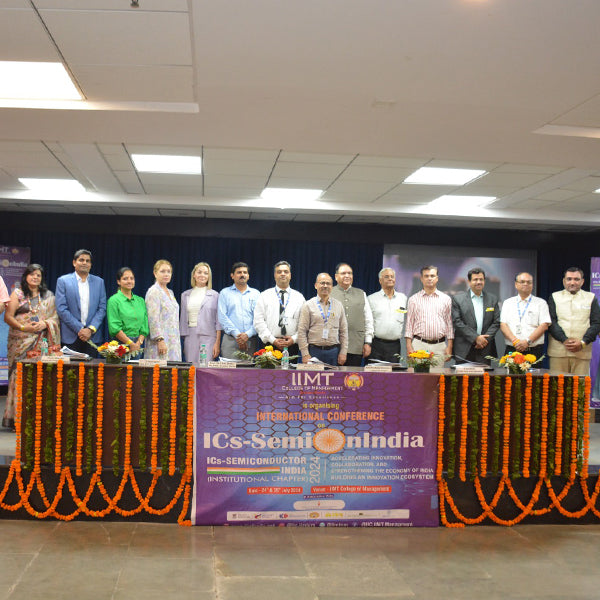

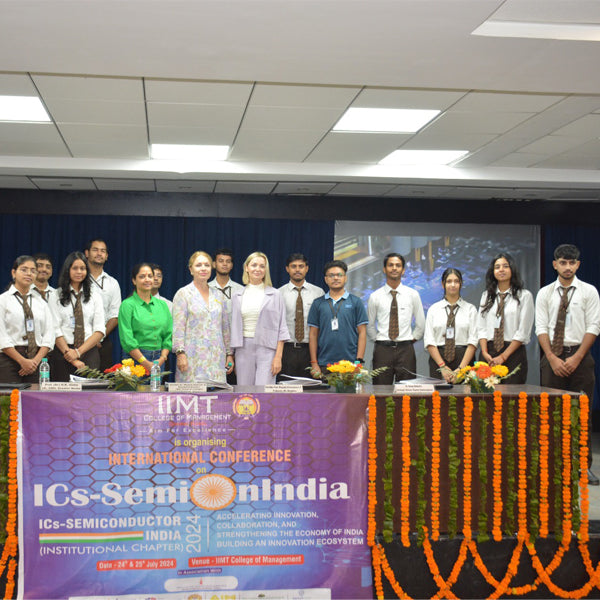
Digital Forest
Forest with 21 Trees planted
IIMT Group of Colleges Combines Knowledge and Nature with Agroforestry at ICs - SEMICONDUCTOR INDIA 2024
The IIMT Group of Colleges, known for its academic excellence and strong commitment to environmental sustainability, took an impactful step towards fostering a greener future by organizing a tree plantation initiative during the International Conference on ICs - SEMICONDUCTOR INDIA 2024. As part of their dedication to creating a positive environmental impact, the college planted trees in an agroforest concept, blending ecological restoration with agricultural practices.
This initiative was not just a one-off event, but a reflection of IIMT's long-term environmental vision. The trees planted during this event are set to thrive alongside crops and other plants, creating a sustainable ecosystem that benefits both the environment and local communities. Agroforestry, a practice that integrates trees with crops, helps in reducing soil erosion, improving biodiversity, and enhancing carbon sequestration.
By involving students, faculty, and attendees of the conference in the plantation initiative, IIMT Group of Colleges reinforced the message of sustainability and environmental stewardship. This initiative highlights the importance of blending academic pursuits with real-world environmental action, helping to raise awareness about the vital role agroforestry plays in the future of our planet.
Tree Plantation Date
24th July 2024
Plantation Location
Sahayadri Van, Girvi, Satara, Maharashtra 415523
Trees Planted
Total Count: 21 Trees
Species Name: Mango, Guava, Chiku, Jackfruit, Coconut
Forest Type: Agroforest
During the International Conference on ICs - SEMICONDUCTOR INDIA 2024, IIMT Group of Colleges took a proactive step towards environmental sustainability with a tree plantation initiative rooted in the agroforest concept. This initiative aimed to blend tree planting with agricultural practices, creating a sustainable ecosystem that benefits both the environment and local farmers. The agroforestry approach not only focused on planting trees alongside crops but also emphasized a farmer-centric model, recognizing the importance of integrating trees into farming systems to enhance biodiversity, reduce soil erosion, and improve yields. By involving farmers in the planting process, IIMT ensured that the benefits of this initiative extended to the local agricultural community, empowering them to adopt sustainable practices that support long-term ecological health while boosting their livelihoods. This thoughtful approach reflects IIMT's commitment to promoting environmental stewardship and fostering sustainable agricultural practices.
Advantages Of Agroforest
Enhanced Income Diversification
By integrating trees into farming systems, farmers gain access to multiple sources of income, such as fruits, timber, and medicinal plants. This diversification reduces dependency on a single crop, ensuring greater financial stability.
Improved Livelihood Resilience
The agroforestry model helps farmers become more resilient to the impacts of climate change and market fluctuations. Trees contribute to a balanced farming system, ensuring more consistent yields and protecting against the unpredictability of weather.
Reduced Farming Costs
Agroforestry reduces the need for expensive chemical fertilizers and pesticides by improving soil health naturally. The trees’ roots help prevent soil erosion and contribute organic matter, leading to reduced reliance on external inputs.
Soil Conservation and Erosion Control
Trees help prevent soil erosion by stabilizing the ground with their root systems, especially in areas vulnerable to heavy rainfall or wind. This results in better soil structure and long-term fertility.
Improved Soil Fertility
The addition of trees to farming systems enriches the soil with organic matter, enhancing its nutrient content and structure. This leads to better overall soil health, which supports more productive and sustainable farming.
Biodiversity Enhancement
Agroforestry systems introduce a variety of tree species alongside crops, fostering a diverse ecosystem that supports wildlife and maintains ecological balance. This biodiversity is crucial for ecosystem resilience.
Carbon Sequestration
Trees in agroforestry systems capture carbon dioxide from the atmosphere and store it in their biomass, reducing the overall carbon footprint of agricultural activities and contributing to the fight against climate change.
Climate Resilience
Agroforestry systems help farms become more resilient to climate-related challenges, such as droughts and floods. By improving soil health and water retention, they provide a buffer against extreme weather events.
Improved Water Retention
The trees in agroforestry systems enhance the soil’s ability to retain water, which is especially beneficial in dry regions. This reduces the need for external irrigation, helping farmers conserve water.
Water Quality Protection
Trees filter rainwater, reducing runoff and improving the quality of local water sources. This contributes to better water management and reduces the risk of contamination from agricultural chemicals.
Promoting Sustainable Farming Practices
Through the initiative, IIMT Group of Colleges educates farmers about sustainable farming practices that benefit both the environment and their livelihoods, encouraging the wider adoption of agroforestry techniques.
Collaboration and Knowledge Sharing
The initiative fosters a collaborative environment between IIMT and local farmers, creating a space for knowledge exchange and shared resources. This partnership strengthens the agricultural community and promotes sustainable practices.
Activities During Tree Plantation
During the IIMT Group of Colleges' tree plantation initiative at the International Conference on ICs - SEMICONDUCTOR INDIA 2024, the plantation activities were carried out by local farmers as part of the agroforest concept. The farmers meticulously prepared the site, selecting appropriate tree species that would thrive alongside agricultural crops, enhancing biodiversity and soil health. They planted a variety of trees that would support sustainable farming, such as fruit-bearing trees, timber species, and nitrogen-fixing plants. These trees were strategically placed to help prevent soil erosion, improve water retention, and promote organic farming practices. As part of the initiative, farmers also ensured proper spacing between trees and crops to optimize land use and improve overall farm productivity. The focus was on integrating tree planting with existing agricultural systems, supporting both ecological balance and the livelihoods of the farming community, with long-term benefits for the environment and agricultural sustainability.
Tree Plantation Purpose
The tree plantation initiative by IIMT Group of Colleges in the agroforest concept significantly contributes to the achievement of several Sustainable Development Goals (SDGs). Below are the SDGs supported by this initiative:
1. SDG 1: No Poverty
Agroforestry can help improve the incomes of farmers by diversifying their sources of revenue. Through the plantation of fruit trees, timber, and medicinal plants, farmers gain additional income streams, which contribute to poverty alleviation, especially in rural communities. By increasing farm profitability and sustainability, the initiative reduces vulnerability to economic shocks and supports the broader goal of eradicating poverty.
2. SDG 2: Zero Hunger
The agroforestry model supports food security by integrating tree planting with crop cultivation. By planting nitrogen-fixing trees and fruit-bearing species, the soil fertility is improved, leading to better crop yields and healthier food production. This enhances food security for farmers and the surrounding community, ensuring access to nutritious food and promoting sustainable agricultural practices that can meet growing food demands.
3. SDG 3: Good Health and Well-Being
Agroforestry improves the quality of air and water, which directly impacts public health. The trees planted during IIMT's initiative purify the air by absorbing pollutants and sequestering carbon, contributing to cleaner air. Additionally, tree cultivation in agroforestry systems promotes access to medicinal plants and healthy food sources, further supporting the well-being of local communities.
4. SDG 4: Quality Education
Through the tree plantation initiative, IIMT engages local farmers and students in learning about sustainable agricultural practices and environmental stewardship. Educational workshops and on-the-ground training are part of the initiative, fostering a deeper understanding of agroforestry's benefits. By imparting this knowledge, the initiative contributes to quality education by promoting practical, hands-on learning and raising awareness about sustainability.
5. SDG 6: Clean Water and Sanitation
Trees play a crucial role in water retention and filtration. The agroforest system enhances water quality by reducing runoff and preventing soil erosion. Trees also improve groundwater recharge, which is essential for maintaining clean water supplies. This contributes to the goal of ensuring availability and sustainable management of water and sanitation for all.
6. SDG 8: Decent Work and Economic Growth
By promoting sustainable farming practices, the IIMT tree plantation initiative supports the local economy. The diversification of crops and the sustainable use of land resources through agroforestry create employment opportunities in rural areas, improving livelihoods and promoting long-term economic growth. Moreover, agroforestry can enhance farm productivity, leading to economic prosperity for farmers.
7. SDG 12: Responsible Consumption and Production
Agroforestry is a model of responsible consumption and production. It encourages sustainable land management, reduces the reliance on chemical fertilizers and pesticides, and enhances biodiversity. By integrating trees with crops, the initiative promotes circular agricultural practices, where natural resources are used efficiently, and waste is minimized, ensuring sustainable food production systems.
8. SDG 13: Climate Action
The tree plantation initiative is directly aligned with efforts to combat climate change. Trees sequester carbon dioxide, acting as a natural carbon sink. By increasing the number of trees in the region, the initiative helps mitigate the effects of climate change. Additionally, agroforestry systems improve soil health, making them more resilient to extreme weather conditions like droughts and floods, further supporting climate adaptation and resilience.
9. SDG 14: Life Below Water
Healthy forests play an important role in preserving the quality of water bodies by preventing soil erosion and filtering out harmful substances that can contaminate water sources. By planting trees and improving soil health through agroforestry, the IIMT initiative contributes to the health of aquatic ecosystems, safeguarding life below water.
10. SDG 15: Life on Land
The agroforestry tree plantation directly supports the goal of protecting, restoring, and promoting the sustainable use of terrestrial ecosystems. By creating habitats for various species and improving biodiversity, the initiative helps preserve ecosystems and strengthen resilience against land degradation. Additionally, agroforestry promotes soil conservation, which is essential for the health of terrestrial ecosystems.
11. SDG 17: Partnerships for the Goals
IIMT Group of Colleges' partnership with Grow Billion Trees has played a crucial role in achieving SDG 17: Partnerships for the Goals by fostering collaboration between educational institutions, local farmers, and environmental organizations. Through this partnership, IIMT has successfully integrated sustainable agricultural practices into its tree plantation initiatives, enabling a large-scale impact on environmental conservation. Grow Billion Trees has provided the necessary expertise and resources to implement agroforestry techniques, while IIMT has mobilized farmers and local communities to actively participate in the plantation process. This collaboration not only promotes the importance of environmental stewardship but also builds strong, long-term partnerships that bring together various stakeholders to work towards common sustainability goals, ensuring the success of tree planting initiatives that contribute to both local and global environmental benefits.
ESGs Achieved Through Agroforestry
Environmental (E)
The IIMT tree plantation initiative in the agroforest concept makes a significant contribution to environmental sustainability by integrating trees into agricultural landscapes. This approach enhances biodiversity by creating habitats for wildlife and promoting ecological balance. The planted trees act as carbon sinks, sequestering carbon dioxide and helping combat climate change. They also improve soil health by preventing erosion, enriching the soil with organic matter, and reducing the need for chemical fertilizers. By improving water retention and minimizing surface runoff, the initiative ensures better water management and reduces the risk of water contamination. Collectively, these efforts demonstrate a commitment to preserving natural resources and addressing environmental challenges.
Social (S)
The initiative strengthens the social fabric by actively involving local farmers in tree planting activities. By promoting agroforestry, it enhances the livelihoods of farmers through diversified income streams from timber, fruits, and medicinal plants, reducing economic vulnerabilities. The program also fosters community engagement and raises awareness about sustainable agricultural practices, empowering farmers with the knowledge and skills to adopt environmentally friendly farming techniques. Furthermore, the initiative creates a sense of shared responsibility among participants, encouraging long-term stewardship of the environment. This focus on community empowerment underscores IIMT's dedication to fostering inclusive growth and improving the well-being of rural communities.
Governance (G)
IIMT's governance in implementing the agroforest tree plantation initiative reflects transparency, accountability, and a strong commitment to sustainable development goals. The collaboration with Grow Billion Trees and local farmers exemplifies effective stakeholder engagement and responsible decision-making. By adhering to sustainable practices and promoting long-term environmental and social benefits, the initiative aligns with global ESG standards. IIMT ensures the initiative is monitored for its impact, with clear objectives to support environmental conservation, social upliftment, and ethical governance. This structured approach highlights the institution's leadership in driving sustainability and fostering partnerships that deliver measurable results.
Commitment by Grow Billion Trees
Grow Billion Trees is committed to driving sustainable plantation efforts, ensuring every initiative aligns with key environmental objectives and promotes long-term ecological balance. We focus on selecting native tree species that are well-adapted to local ecosystems, ensuring a higher survival rate and stronger environmental impact.
To maintain plant health and longevity, Grow Billion Trees emphasizes continuous maintenance and regular monitoring of the plantations. This approach helps ensure that each tree thrives, contributing effectively to both biodiversity and climate resilience.
Transparency is a core principle in our operations. Clients receive comprehensive reports, including geo-tagging of planted trees, survival rate updates, and ongoing progress reports. This level of openness allows clients to track the direct impact of their contributions, reinforcing trust and accountability.
Through our dedication to sustainable practices, Grow Billion Trees ensures that every plantation project leaves a lasting positive footprint on both the environment and the local communities it serves.
Summary
The IIMT Group of Colleges, celebrated for its dedication to academic excellence and environmental sustainability, launched a transformative tree plantation initiative during the International Conference on ICs - SEMICONDUCTOR INDIA 2024. Embracing the agroforest concept, the initiative aimed to integrate sustainable farming practices with environmental conservation. Local farmers led the plantation efforts, strategically planting trees that enhance biodiversity, improve soil health, and provide economic benefits through diversified agricultural outputs like fruits and timber. This initiative not only supports global sustainability goals but also empowers farmers by promoting livelihood resilience, income diversification, and ecological balance. Through this effort, IIMT continues to demonstrate its leadership in fostering a greener, more sustainable future.
Trees for Corporates
Trending
Most Popular
FAQ
What is the significance of IIMT’s tree plantation initiative in agroforests?
IIMT’s tree plantation initiative in agroforests combines environmental sustainability with farmer empowerment. By planting trees alongside crops, this initiative enhances biodiversity, improves soil health, and supports carbon sequestration. It also helps farmers diversify their income sources through timber, fruits, and medicinal plants. This sustainable approach addresses both ecological and economic challenges, showcasing IIMT’s commitment to building a greener and more resilient future.
How does the agroforest concept benefit farmers?
Agroforestry offers farmers multiple benefits, including income diversification from trees and crops, improved soil fertility, and reduced dependency on chemical fertilizers. It also strengthens livelihood resilience by providing additional revenue streams from timber and fruits. IIMT ensures that farmers are central to the plantation process, empowering them with sustainable practices for long-term growth and success.
How is IIMT contributing to SDGs through tree plantation?
IIMT’s tree plantation initiative supports several Sustainable Development Goals, including SDG 13 (Climate Action), SDG 15 (Life on Land), and SDG 1 (No Poverty). By integrating agroforestry, the initiative addresses climate change, enhances biodiversity, and improves farmer livelihoods. Partnerships with organizations like Grow Billion Trees also advance SDG 17 (Partnerships for the Goals), ensuring collective progress.
Why did IIMT choose farmers for plantation activities?
IIMT believes in empowering local communities, and involving farmers in plantation activities ensures sustainable impact. Farmers bring their expertise in nurturing plants while benefiting from the initiative through diversified income and enhanced soil quality. This farmer-centric approach aligns with IIMT’s mission of fostering inclusive growth and environmental conservation.
What types of trees are planted in the agroforest initiative?
IIMT’s agroforest initiative includes a mix of timber, fruit-bearing, and nitrogen-fixing trees. These species are chosen to enhance biodiversity, improve soil health, and provide economic benefits. Timber trees offer long-term revenue, while fruit trees generate immediate income for farmers. Nitrogen-fixing species enrich the soil naturally, reducing the need for fertilizers.
How does agroforestry support climate change mitigation?
Agroforestry aids climate change mitigation by sequestering carbon through trees and improving soil health. IIMT’s tree plantation initiative helps reduce greenhouse gas emissions and promotes sustainable farming practices. By creating a balance between agriculture and forestry, it ensures long-term environmental benefits while tackling global warming.
What role did the International Conference play in IIMT’s initiative?
The International Conference on ICs - SEMICONDUCTOR INDIA 2024 served as a platform for IIMT to launch its agroforest tree plantation initiative. This event highlighted the importance of combining academic innovation with environmental sustainability. The conference inspired collaboration among stakeholders to address global challenges through sustainable practices like agroforestry.
How does IIMT ensure the success of tree plantations?
IIMT collaborates with experts and organizations like Grow Billion Trees to plan and execute effective plantation drives. Local farmers are involved in every stage, from planting to maintenance, ensuring high survival rates of trees. Regular monitoring and sustainable agroforestry practices ensure long-term success and environmental impact.
Can agroforestry improve biodiversity?
Yes, agroforestry greatly enhances biodiversity by creating habitats for various species of flora and fauna. IIMT’s agroforest initiative incorporates diverse tree species, which attract pollinators, improve soil microbial activity, and support a balanced ecosystem. This harmonious blend of trees and crops helps maintain ecological balance while boosting agricultural productivity.
What future plans does IIMT have for tree plantation initiatives?
IIMT aims to expand its agroforest initiatives by collaborating with more communities and planting additional trees. The focus will remain on empowering farmers, enhancing sustainability, and contributing to global environmental goals. By scaling up these efforts, IIMT seeks to create a larger impact on biodiversity, climate change, and rural livelihoods.
1. IIMT Agroforest Initiative
The IIMT Agroforest Initiative isn’t just about planting trees—it’s about planting hope! With their tree plantation drive during the International Conference on ICs - SEMICONDUCTOR INDIA 2024, IIMT merged science with sustainability. By involving local farmers in the agroforest concept, they turned a simple tree planting event into an eco-revolution. These aren't just trees—they're future timber, fruit-bearing giants, and nitrogen-fixing warriors that will rejuvenate farmlands and fight climate change. It's sustainability, academic brilliance, and green innovation rolled into one. Because when IIMT plants a tree, it’s not just about roots in the soil but roots for a greener tomorrow!
2. Tree Plantation in Agroforest Concept
fruit trees, timber plants, and nitrogen-fixing beauties living in harmony with crops. They purify the air, enrich the soil, and even act as nature's pest control. The best part? Farmers get fruits, shade, and extra income while the planet gets a carbon-sequestering powerhouse. Who knew farming could be this fancy and eco-friendly? Kudos, IIMT, for this leafy, life-changing initiative!
3. Sustainability Through Agroforestry
Sustainability is no longer a buzzword—it’s a way of life, and IIMT is leading the charge. Through agroforestry, they’re turning barren farmlands into lush, green havens. By integrating trees into agriculture, they’re not just saving the planet but also securing farmers’ futures. With soil so rich it’s practically gourmet and crops flourishing like they’ve hit the gym, agroforestry proves that sustainability isn’t boring—it’s brilliant! Add IIMT’s expertise, and you have a recipe for a planet that thrives while feeding its people. Talk about a win-win situation!
4. Farmer-Centric Tree Plantation
When IIMT says farmer-centric, they mean it. Forget CEOs in boardrooms—this tree plantation initiative puts farmers in the driver’s seat. These local heroes handle everything from planting to nurturing, turning every tree into a green MVP. The result? Improved livelihoods, diversified incomes, and eco-warrior farmers who make Captain Planet look lazy. Add agroforestry’s magic touch, and it’s a revolution in the making. Bravo to IIMT for making farmers the unsung heroes of the sustainability saga. Farming never looked this cool!
5. International Conference Green Initiative
The International Conference on ICs - SEMICONDUCTOR INDIA 2024 didn’t just talk tech—it talked trees! IIMT’s green initiative stole the show, proving that innovation and nature can coexist. With farmers planting eco-friendly forests, this event turned into a masterclass in sustainability. Forget boring keynote speeches; these trees are the real show-stoppers, tackling carbon emissions and supporting biodiversity. A conference with a green twist? Now that’s the kind of networking the planet needs!
6. Carbon Sequestration by Agroforests
Carbon sequestration sounds like a sci-fi term, but it’s nature’s way of cleaning up our mess. And IIMT’s agroforests are at the forefront of this cosmic cleanup. By planting trees that gobble up CO₂ like it’s a free buffet, they’re taking a stand against climate change. These trees don’t just sit there looking pretty—they’re actively scrubbing the air and storing carbon underground. It’s like giving the Earth a giant breath mint. Thanks, IIMT, for being the planet’s ultimate eco-champ!
7. Biodiversity in Agroforests
Biodiversity is the spice of life, and IIMT’s agroforest initiative is a five-star buffet for nature. With trees, crops, and critters coexisting like an eco-utopia, these agroforests are nature’s version of a block party. Birds, bees, and even soil microbes thrive here, creating an environment so rich, it’s basically the Kardashian of ecosystems. By planting diverse species, IIMT isn’t just saving the planet—they’re throwing a biodiversity bash. Nature approves, and so do we!
8. Empowering Farmers Through Sustainability
Move over superheroes; farmers are the new saviors of the planet! IIMT’s agroforest initiative doesn’t just plant trees—it plants opportunities. By empowering farmers with sustainable practices, they’re creating eco-entrepreneurs who grow green and earn green. From better soil health to diversified incomes, this initiative is all about farming smarter, not harder. The cherry on top? Happier farmers and a healthier planet. Sustainability has never looked so empowering—or so profitable!
- Choosing a selection results in a full page refresh.
- Opens in a new window.


